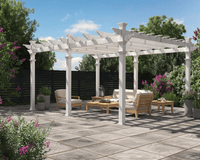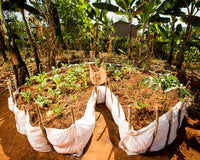DIY: Gardening, Composting, Tips and Tricks
Good day friends. I’m back to discuss another DIY project to help beautify your garden and hopefully get you on the correct path to achieving your gardening goals. Today we’ll talk about Gardening and Composting and some tips and tricks to help you along the way. Whether you’re planning an elaborate garden or just want to set out on a growing adventure, finding information can be a chore. Do you want vegetables, flowers, or just a simple green vegetation type garden that include hostas, ferns, or any other greens?
Gardening.
If you are wanting to grow a specific type of plant, a lot of variables must be considered. What type of soil should you use? What kind of maintenance do they need i.e., watering, fertilization, trimming? Is my climate the proper climate for this species? A simple plan on what your end goal is, could be what stands between a flourishing garden or a lump of dirt. What are your needs to achieve your garden goals? One of the most crucial things to consider is the area you wish to grow. Sunlight is detrimental to the growing process of any plant or vegetable. Some need more, some not quite so much. Locating that area of your yard should be step 1. How will you keep the area contained? By using one of our many composting gardens, you will be able to see how much area is needed and how to prepare the area.
Ideally growing season starts in the springtime unless you are in a warmer climate all year round. Selecting what you would like to grow and how much will determine the size and placing of your garden. Making sure the garden is on as level ground as possible will aid in the proper drainage of excess water that may be in the garden. This will come from heavy rainfall or over watering. Once you have found the ideal location, lets start to build the garden. For this blog let’s use our exceptional Classic 6x6 Keyhole Garden. https://wearevita.com/products/classic-6x6-keyhole-composting-garden?_pos=1&_sid=f7b06bf1a&_ss=r.

Great job. Now that the garden is built, what will we fill it with? Let start by using the box the garden came in. Using the box is a great way to reduce waste and that’s right, its compostable.
Continuing to fill the garden. This garden is quite deep and filling with all soil could be quite expensive and add unnecessary pressure to the sides of the garden. Let’s continue to fill the garden with some composable materials. Layering these items will aide in the garden getting the nutrients it deserves. By layering carbon-rich and then nitrogen-rich materials, this will give you proper nutrient distribution to your garden. Carbon rich items include leaves, straw, twigs, etc., and nitrogen-rich materials include grass, fruit and veggie scraps, coffee grounds and tea bags, etc. Please see our composting 101 guide for more items. https://wearevita.com/pages/composting-101?_pos=1&_sid=ed12626fb&_ss=r,
When a certain height of these materials in the garden has been achieved, you can then fill the remaining with the soil of your choice. As a suggestion, using potting soil is ideal for most vegetation. It also is a light-weight alternative to others that have a clay rich formula.
Maintaining your garden is quite a simple process. The garden bed itself should not require too much work, maybe a spray down with the garden hose to keep the exterior looking new. Depending on what you are growing, a little research in how to properly care for what you are growing, should be done. Basics include watering, trimming, and weeding.
Composting.

Why?
It is a great way to add nutrient rich items to your garden to help to grow healthy, vibrant plants. It reduces the waste we send to our landfills and is something we can all contribute to a healthier environment from our own backyard.
Most of us think that anything from the kitchen food scraps is compostable. This simply isn’t true. While most of the scraps are bio-degradable, they are not always safe for composting. Meats, dairy, and refined foods do not make for a good compost. Not only do they not add nutrients to the garden they can also attract unwanted guests like rodents. Ideally, there should be an equal amount of nitrogen-rich materials and carbon-rich materials in the compost bin. With a proper amount of water to keep the process going.
Maintaining your compost basket is quite an easy process. Turning your compost should be done every three to four days. As the compost matures, this can be done less frequently. Down to once a week. Adding water to the compost should be done on a need basis. You want to keep everything moist but not wet. Too much water may cool and slow the process down.
Composting is beneficial by promoting healthier plant growth. In addition to this it also conserves water, reduces waste, improves soil health, and lowers your carbon footprint.

Tips and Tricks.
- Keeping those critters out
With any outdoor garden, you want to protect it from unwanted guests. These critters cannot only ruin the vegetation but also the garden itself. The following will help in preventing those critters from doing your garden some damage
- Essential oils
By spraying a diluted peppermint essential oil around the base of the exterior of the garden, this will help to keep rodents out of the garden and away from the composting area.
- Chicken wire or Vita Fence
To prevent other animals like rabbits, racoons, or possums out of the garden, using chicken wire can help but may hamper the growth of your vegetation. Vita has researched this and has developed a system that will do the job but also give it a stylish look rather than chicken wire. We call it the Classic Garden Fence Panel and is designed to not only keep unwanted guests out but keep within the style of the garden. Specifically made for our 4x4 gardens. https://wearevita.com/products/classic-garden-fence-panel-set-of-4?_pos=2&_sid=9fab9764b&_ss=r

- Here’s one some of you may not know. Adding earthworms to your garden will greatly benefit the soil for your plants to grow. Studies of earthworms in agricultural settings show that they improve water infiltration and soil aeration. And their castings form soil aggregates by combining minerals and organic matter. They also prevent soil compaction for better plant growth.
Your garden is all set up and your ready to add the soil. But wait, how do I stop the soil from getting in the composting basket. If you still have some of the box left over, you can line the exterior or interior of the basket. When you have filled the garden and the composting basket, simply pull up the cardboard to allow the compost to do its magic.
As mentioned earlier, your compost should have equal parts of carbon and nitrogen to get the full benefits of the composting process. There are also items you should not add. Here is a list of items that you should avoid putting in the composting basket:
- Meat or dairy products
- baked good
- acidic foods
- oily or greasy foods
- pet or human waste
- and weeds.
I hope this information was helpful and interesting. Composting while gardening can be quite rewarding but the time put in is necessary. While Mother Nature does most of the work, it is our responsibility to help make our environment a little nicer to live in.
Thank you.
Until next time,
Pete




